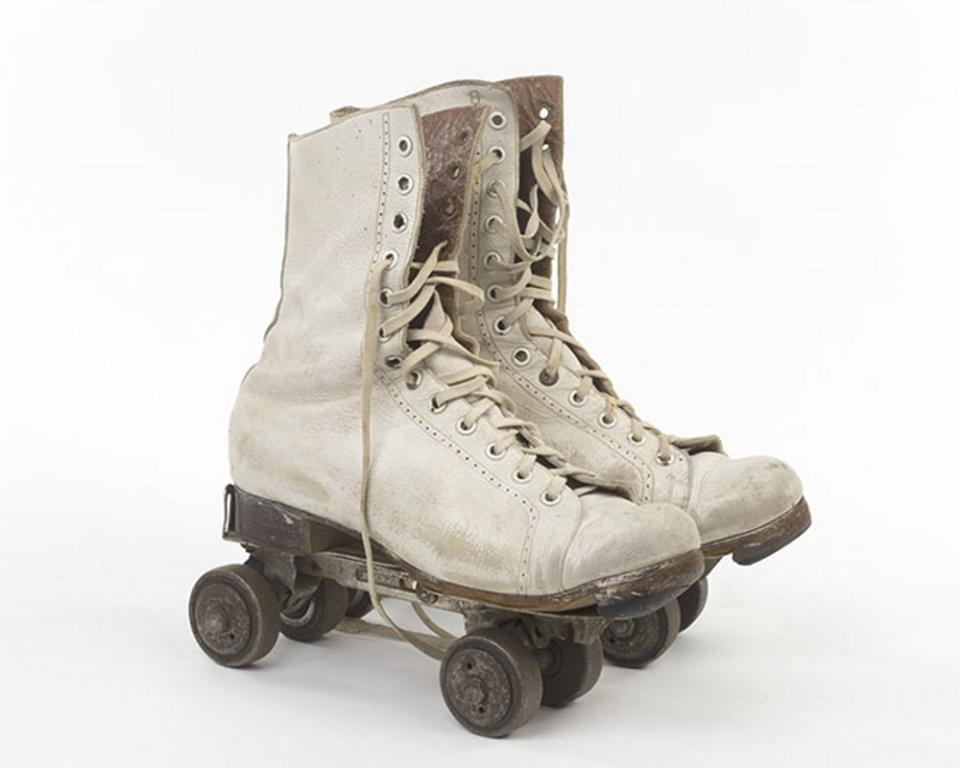The invention of roller skates has been traditionally credited to Joseph Merlin, in the 1760s.
Early models were similar design to the ice skate and typically had an ‘in-line’ arrangement of wheels. In 1819, M. Petibled of Paris received the first patent for a ‘in-line’ roller skate using three wooden or metal wheels. The wheels were connected to a wooden block that in turn could be strapped to a boot.
The first practical roller skate was designed in 1863 by James Plimpton who used two parallel pairs of wheels, one set near the heel of the boot and the other near the front. This construction was first known as the ‘rocking’ skate. This began the first great recreational roller-skating craze which swept across the world and rinks were built in both small towns and large cities.
In the 1880s ball bearings were added to the wheel construction, allowing for a smoother ride. Toe stops for braking were introduced as early as the 1850s, the large rubber toe stop appeared in the 1950s. In the 1960s lightweight polyurethane plastic wheels replaced the wooden or metal wheels traditionally used in skates.
In the 1980s in-line roller-skating became popular. Developed by hockey-playing brothers Scott and Brennan Olson, they founded Rollerblade, Inc. Their skates had four wheels that extended the full length of the boot, giving the skater greater maneuverability and speed.
The Golden Age of Roller Skating was between 1937 and the 1950’s. Roller Skating goes in and out of fashion; another skating boom in the 1970’s linked with Disco, and Roller Derby made a comeback in the 2000’s. Roller skates became in short supply worldwide due to the COVID-19 pandemic in 2020-2021.

Add new information